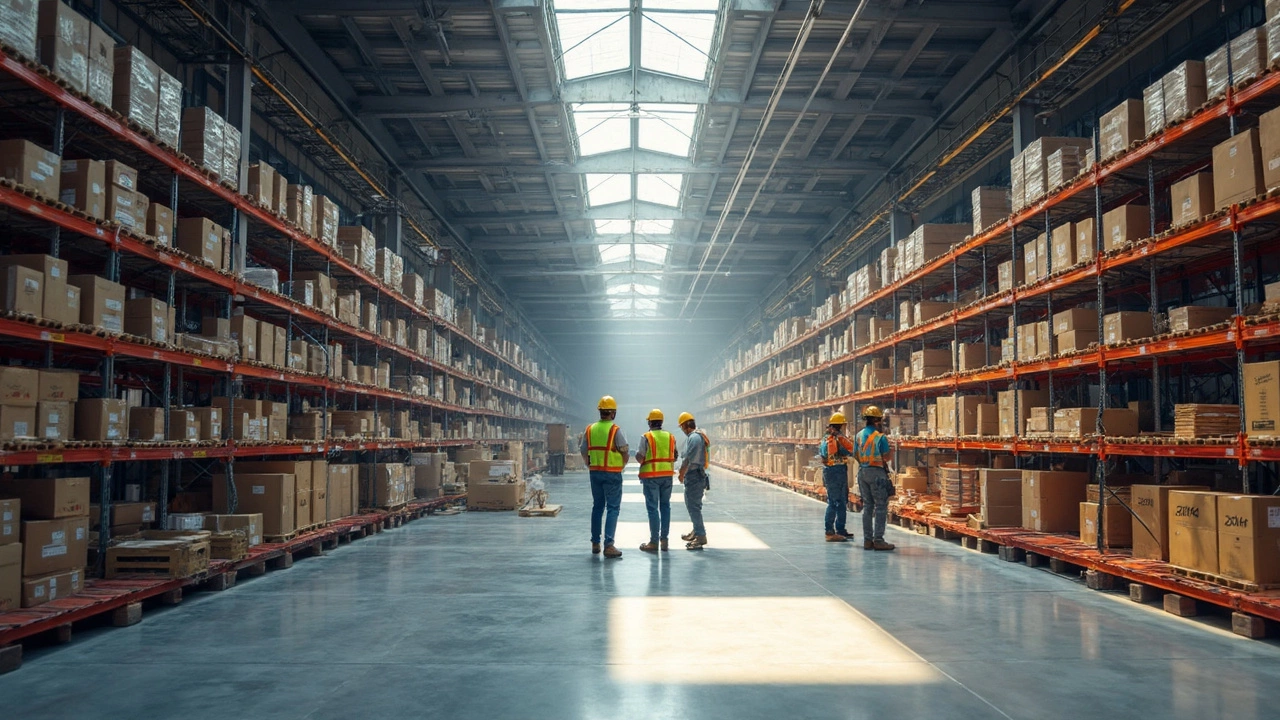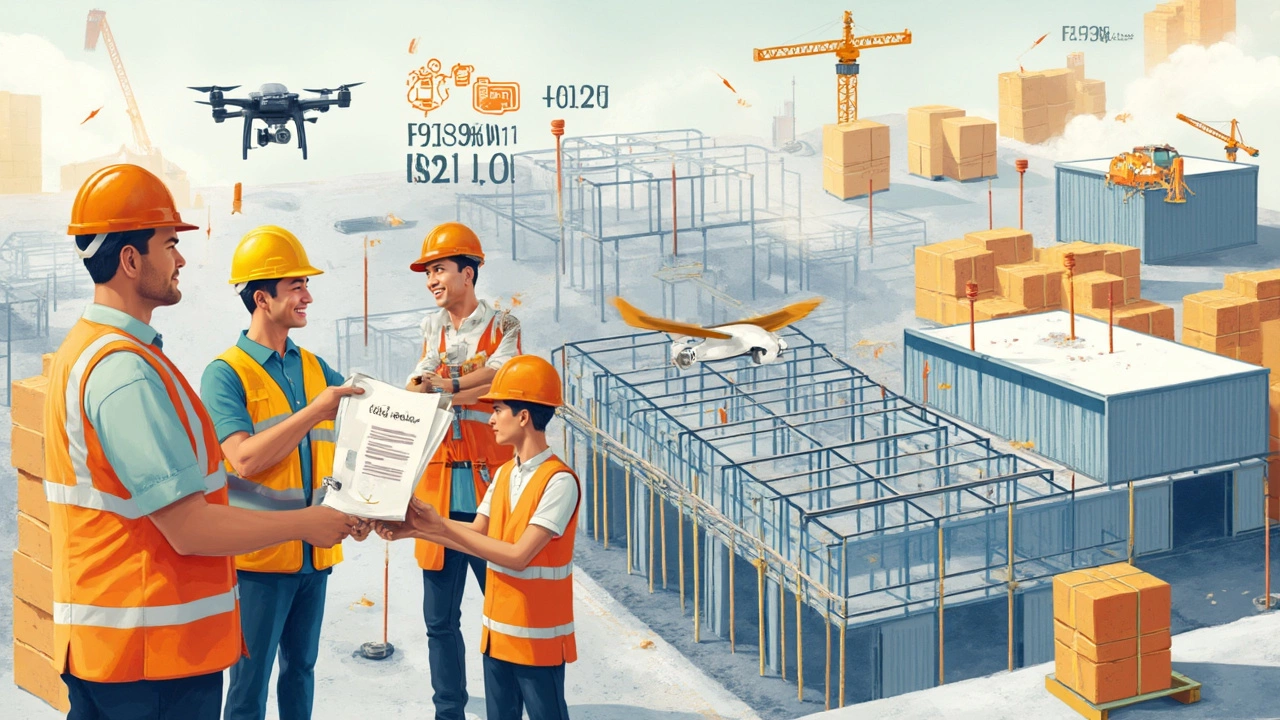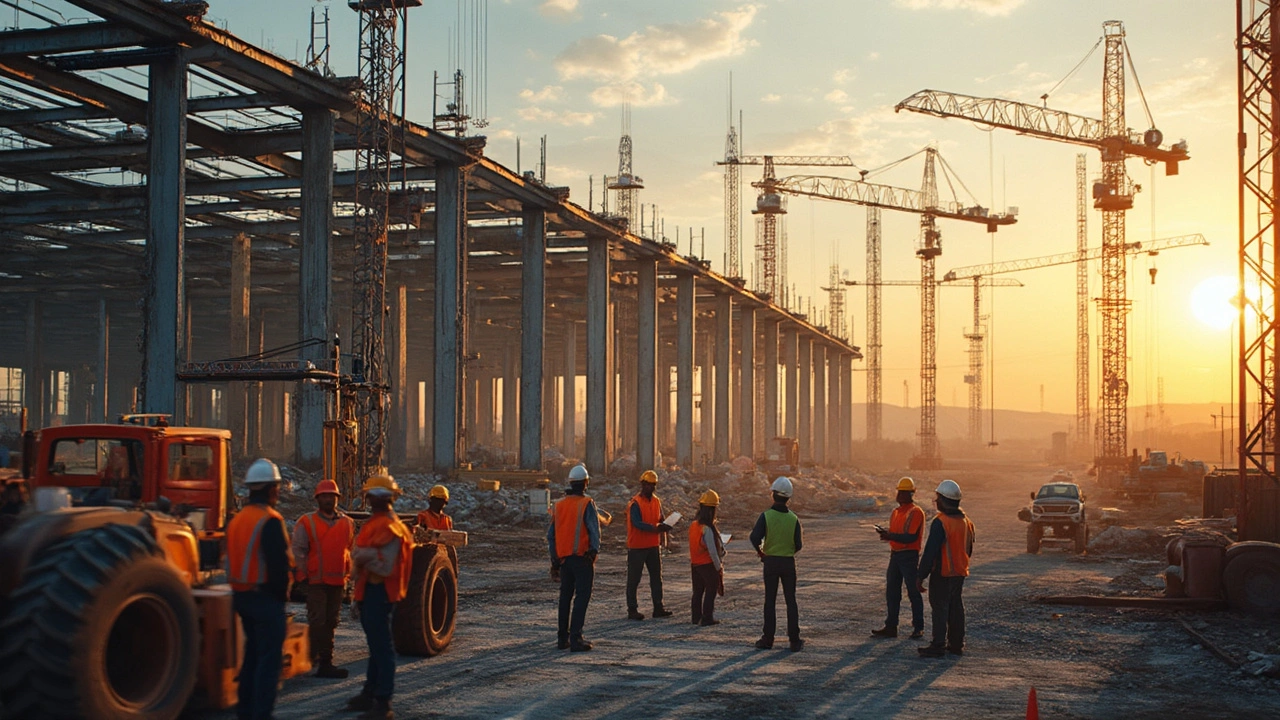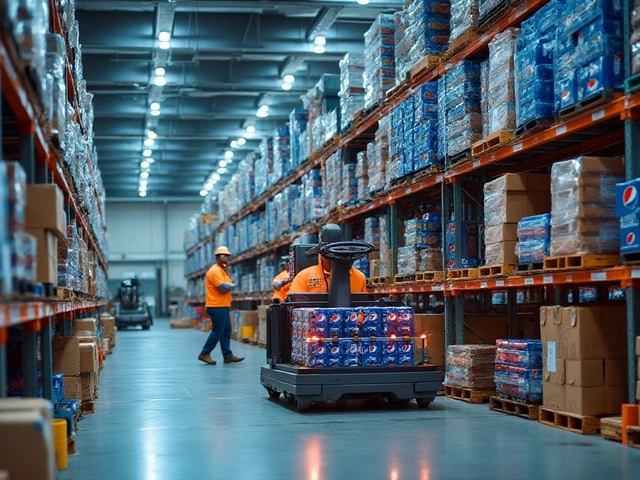You drive past a brand-new Amazon warehouse with its endless gray walls, lines of loading docks, and a parade of trucks snaking around the yard. Ever wondered who actually puts that massive structure together? Each one is a small city built nearly from scratch, and Amazon isn’t sending its own engineers out with tool belts. It takes a sprawling network of companies and thousands of workers, from crane operators to HVAC specialists, all moving at breakneck speed to have these warehouses up and running—sometimes within months of the first shovel striking dirt.
Behind the Blueprints: Major Construction Companies, General Contractors, and Amazon’s Secret Sauce
When it comes to building Amazon warehouses in the USA, Amazon doesn’t swing the hammer. Instead, they hire big-name construction managers to oversee everything, then outsource the hands-on work to specialized contractors. Some of the biggest construction companies dominating these projects include Clayco, Ryan Companies, The Whiting-Turner Contracting Company, and The Conlan Company. You’ll also see names like Panattoni Construction and ARCO Construction popping up on contracts for Amazon fulfillment centers. Each of these firms acts like the conductor in a wild orchestra—lining up the steel fabricators, concrete pourers, electricians, insulation pros, and dozens more niche professionals.
Here’s the thing: Amazon keeps things fiercely competitive. They often award separate contracts for different phases (site prep, shell construction, interior fit-out, and specialty systems). Project managers have to keep up, especially when Amazon’s demand is relentlessly fast. A typical 1-million-square-foot warehouse can go from a bare field to ready-for-robots in less than a year. That’s not just fast for construction—it’s almost breakneck in the industry.
Let’s take a closer look at how a real job starts. Sometimes, Amazon partners with commercial developers like Hillwood or Prologis. These guys might own the land and build the shell to Amazon’s rigid specs, acting as both developer and builder. But on other jobs, Amazon hands the keys to a general contractor and lets them quarterback the entire show, including hiring every subcontractor needed—from soil testing to network wiring.
Check out this quick table showing just a couple of the top players and the scale of their work on Amazon projects:
| Company Name | Sample Amazon Projects | Known For | Approximate Warehouse Size |
|---|---|---|---|
| Clayco | Joliet, IL; Omaha, NE | Fast-track, design-build expertise | Up to 3.8 million sq. ft. |
| Ryan Companies | Phoenix, AZ; Detroit, MI | Turnkey logistics facilities | Typically 1–2 million sq. ft. |
| Conlan Company | Chattanooga, TN; Tulsa, OK | High-bay warehouse specialists | 600,000–1 million sq. ft. |
| Whiting-Turner | Las Vegas, NV; Orlando, FL | National reach, big project teams | 1–3 million sq. ft. |
Amazon pushes for speed by using pre-engineered building systems. That means the steel, roofs, and wall systems are manufactured off-site, then bolted together at breakneck pace on location. They've even used tilt-up concrete walls—where slabs are poured flat on the ground, then hoisted up with massive cranes. One infamous Oklahoma warehouse started vertical construction less than 30 days after the first permit cleared.
Inside these warehouses, specialty contractors handle everything from fire suppression systems (think massive sprinkler lines) to the endless miles of conveyor belts and robotic tracks. Amazon’s obsession with logistics drives a level of standardization: if you peeked behind the scenes at three different warehouse builds, you’d see eerily similar racks, floor plans, and amenities, only scaled for local needs. That helps the construction companies keep their workflows sharp and efficient—faster builds, fewer surprises.

The People Power: Subcontractors, Skilled Labor, and Tech-Savvy Crews
Building an Amazon warehouse spits out some truly jaw-dropping numbers. For a site with a footprint around 15 football fields, you might spot 500 to 1,000 workers onsite at the peak of the push. Each warehouse uses up thousands of tons of steel and concrete, with a pace of construction that leaves little room for mistakes. Amazon expects top-tier safety standards; general contractors do regular audits and require that everyone—from union welders to freelance electricians—go through site-specific training. You’ve got workers pouring floors that must be so flat they can fool robotic forklifts, HVAC specialists hanging ducts longer than city blocks, and tech crews stringing enough data cable to link a small town.
Union labor plays a role in some regions, while states with looser labor laws see more independent contractors. Either way, Amazon’s construction schedule demands seriously skilled trades: ironworkers for the structural frames, masons for the block walls, plumbers for restrooms built to handle hundreds of employees per shift. One infamous detail: The breakrooms and bathrooms are among the first interior spaces finished because Amazon tracks project punchlists down to the minute.
You might be surprised by the technology woven into the process. Drones patrol the jobsite for real-time mapping and progress checks—no more clipboards for the lead supervisor. Digital twins (virtual models of the entire build) help identify clashes and errors before they hit the ground. Some general contractors use exoskeletons and robotic arms for repetitive, heavy lifting tasks—mainly to cut down on injuries. Amazon’s warehouses often require specialized electrical systems. The automation gear eats up so much power that electricians work off custom switchgear and transformer setups sized just for these facilities. One warehouse in North Texas needed its own substation to keep everything humming.
Before equipment like conveyor belts, robotic arms, and smart shelves can go in, specialized teams come in waves. There might be 20 different subcontractors onsite at once: folks hanging fire doors, laying slabs for storage mezzanines, or welding safety rails. The general contractor is responsible for keeping every crew on schedule, making sure no one is standing around or getting in each other’s way.
Want to guess the average time to complete a typical Amazon fulfillment center? Twelve months is common for a massive facility, but some have gone up in under nine. That’s faster than the industry average for projects this size. Skilled managers say it’s all about overlapping crews rather than traditional start-to-finish scheduling; the shell goes up even while interior finishes are underway, trimming precious weeks off the timeline. The temptation to cut corners is real, but Amazon’s project inspectors are infamous for showing up unannounced and shutting down any crew that doesn’t meet the strict checklist—everything from floor dust to electrical labeling.
Subcontractors who perform well—no accidents, ahead of schedule, zero punchlist items left—sometimes get looped straight into the next regional build as Amazon warehouses roll out across the country. That kind of repeat work keeps a lot of local businesses alive, especially if they specialize in automation, racking, or climate control. For those hoping to break in, Amazon posts all project bidding opportunities on procurement portals, but first-timers rarely get the biggest chunks of work. Experience building for big-box retailers or logistics firms is almost mandatory.

The Money, The Methods, and the Madness: Costs, Timelines, and Regional Differences
No two Amazon warehouses are quite the same. But—spoiler alert—building one is wildly expensive and highly complex. Industry reports say your average 1–2 million square-foot Amazon fulfillment center in the USA costs anywhere from $100 million to $350 million. That doesn’t even include the price tag from all the robots, conveyor systems, and security features added later. The final cost depends on land prices, labor costs, regulations, and sometimes just plain old weather (try pouring concrete in a Minnesota winter or hurricane season in Florida).
Amazon’s building schedule is ruthless. In places where time is money—say, the outskirts of San Bernardino, CA, or Dallas, TX—the clock starts ticking the day permits are approved. Delays cost a fortune in lost sales. That’s why you’ll see warehouses going up 24/7, with concrete trucks showing up at midnight and crews swapping shifts like a relay race. Amazon also shifts designs a bit by region. East Coast buildings get beefier insulation for cold snaps, while the West Coast needs more earthquake-ready features. Near the Gulf, you’ll spot extra hurricane bracing and flood-resistant foundations. Amazon adapts its builds not only to geography but to the local workforce, sometimes trucking in experts when a market doesn’t have the tradespeople needed for the size and speed they require.
Curious how Amazon chooses a builder? Fast-track credentials matter more than the cheapest bid. Construction companies have to prove they can handle tight timelines and high-stress coordination. There are horror stories of contractors missing deadlines and getting blacklisted from future Amazon projects—or calmly handing back $50,000 worth of work for missing one inspection sweep.
Here are a few tips if you’re in the business and want a slice of Amazon warehouses work: network with established general contractors, invest in project management tech (Amazon expects up-to-the-minute data sharing), and get ready for a flood of paperwork. Also, know your safety protocols inside and out. Some crews have their own compliance officers just to monitor Amazon’s thick rulebook—miss a step, and you’re off the job.
The pandemic years only added fuel to the fire, with Amazon opening over 100 new distribution hubs in the USA between 2020 and 2023 to keep up with e-commerce surges. The pace pushed innovation: modular offices for fast expansion, hybrid steel-and-wood designs in certain regions, and on-site fabrication to save shipping time. Pandemic protocols meant even more attention to ventilation and worker spacing, making the interior fit-outs an extra headache for general contractors.
For every massive distribution center, there are dozens of smaller, last-mile facilities—Amazon calls them “delivery stations.” These are built by smaller regional contractors, sometimes working off retrofitted existing warehouses rather than new construction. But for the megastructures you see off the interstate, make no mistake: it takes the biggest builders in the business, a mountain of skilled subs, and a project plan that runs almost as efficiently as Amazon’s own delivery network.





